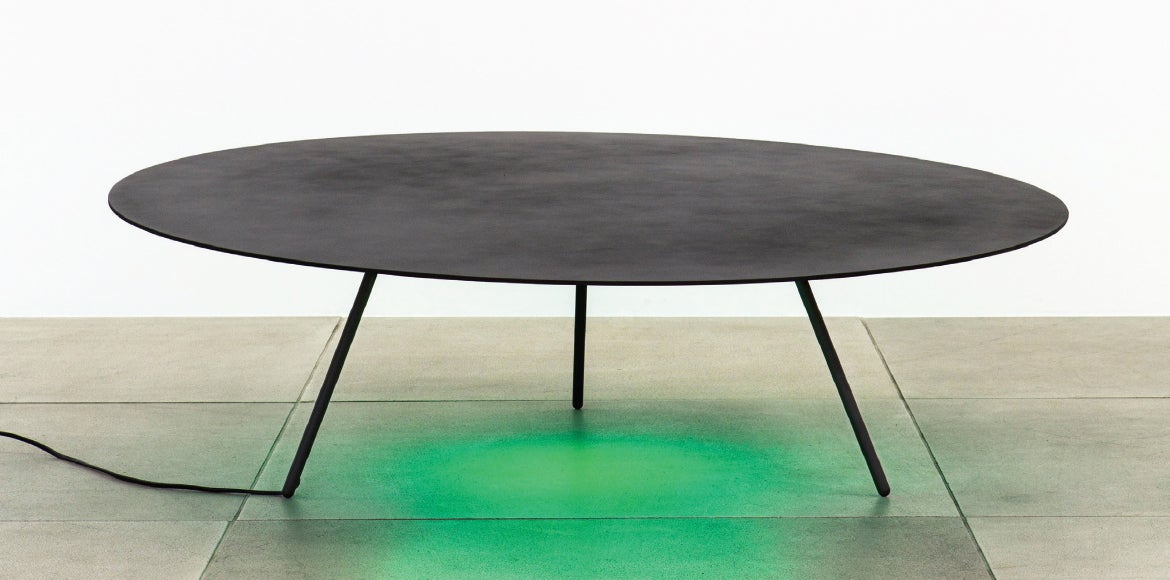THE CALIFORNIA CLOSETS MAGAZINE
 Johanna Grawunder grew up in that kind of house. There’s one in every neighborhood: the home that becomes a multicolor, electrified extravaganza every holiday season. “We were huge Christmas people,” says Grawunder, remembering her childhood in San Diego, California. “Putting the tree up was a three-day affair, and we covered it in tons and tons of light. My dad would then go out on a specific day, December 10th, and cover all the landscaping with Christmas lights. I loved it.”
Johanna Grawunder grew up in that kind of house. There’s one in every neighborhood: the home that becomes a multicolor, electrified extravaganza every holiday season. “We were huge Christmas people,” says Grawunder, remembering her childhood in San Diego, California. “Putting the tree up was a three-day affair, and we covered it in tons and tons of light. My dad would then go out on a specific day, December 10th, and cover all the landscaping with Christmas lights. I loved it.”
The family’s holiday spectacle stirred a notion much grander than awe in local kids or envy in the neighbors. Now an internationally acclaimed light designer, Grawunder creates glowing public installations, exuberant light fixtures, and even lit furniture. It’s evident the direct line of inspiration she draws from luminous holidays past.

Limelight features modules that move via remote control to change how much light is emitted.
Other quintessentially American influences—the giddy, gaudy Las Vegas strip; eerily glowing California freeway signs—inform her designs. After graduating from California Polytechnic State University with a degree in architecture, Grawunder finished her studies in Florence, Italy. In 1986, she started at Sottsass Associati, the studio of the influential Italian designer Ettore Sottsass, where, for the next 18 years, she designed buildings and interiors with Sottsass, working her way up to partner. During that time, she began to hone her focus until she unveiled her sweet spot, her creative comfort zone: light.
“The Milan studio did everything from graphics to spoons to master planning of cities. But for me personally, I like the idea of drilling down and getting to know a subject matter,” Grawunder says. “It’s easier to have expertise.” Her narrowed focus led her to lighting spaces she designed and creating light fixtures for existing designs. The magical quality of light captivates Grawunder, and she integrates it into her work as one would texture, color, or form. “Light colors are different than paint colors,” she once told vintage and contemporary design dealer, Pamono. “There is more vibration and essence—more soul in the luminous, electrified colors.”
She sees her expertise as a natural outgrowth of not only her childhood influences but also her classical training as an architect.
She sees her expertise as a natural outgrowth of both her early, American roots and her classic training as an architect. “The history of architecture is about controlling natural light with windows, skylights, porticos, courtyards,” she says. “But it’s rare to see much concern about what happens when it gets darker.” Typically, she notes, a decorator or homeowner would choose lamps or chandeliers to create artificial light. She saw an opportunity for change. “I began integrating light into architecture and making collections of light pieces, which morphed into experimental light and light sculpture,” she says. “Now my work is more about the light being the protagonist. It’s no longer an afterthought.”
Her first solo show in the mid-1990s, Air Conditioning, featured furniture with light and industrial materials, and created instant buzz in Milan. She left Sottsass Associati in 2001 to set up her own shop, and says her time in Italy had an unexpected impact on her work. “Part of what I learned in Italy is to see your own roots,” she says. “I saw American culture through the eyes of foreigners living abroad, and I appreciated it much more.” Drawn to the aesthetics of subcultures, she produced a collection called Lowrider, inspired by souped-up lowrider cars. It featured a table and sofa with colored light pools bursting from underneath, mimicking the glow seen under lowrider chassis.

Black Dot, a piece from Grawunder’s No Whining on the Yacht collection at the 2013 Carpenters Workshop Gallery, in Paris and London.
Her artistic sculptures and commercial ventures have placed her squarely in the firmament of celebrated talent. “Her work at once recalls the fluorescent light installations of Dan Flavin, the minimalism of Donald Judd and Richard Serra, and the colorful furnishings of her mentor, the Italian architect Ettore Sottsass,” Joanne Furio wrote in Dwell magazine. Museums such as San Francisco’s Museum of Modern Art and the Art Institute of Chicago collect her work. “Unlike light artists, who often create installations that can work in any environment, Johanna’s lit spaces are not just art for art’s sake,” adds Furio, “but designed environments that are appreciated as they are being used.”
Perhaps the key to her work’s distinction is a commitment to pushing each piece on multiple levels: function, beauty, technology, performance. “Designs based on one thing—say, the most advanced technology—would be totally obsolete in a year,” Grawunder says. “I often quote Allen Ginsberg, who said, ‘One God is not enough.’”